
An interesting recent discovery by Moorabool was this small pastel scene of an Australian beach.
Signed ‘A. E. Jobson’, it is an interesting chalk sketch, done on a coarse textured grey toned paper.
Looking for the artist proved to be pointless; they are not recorded anywhere, and seem to belong to the class of ‘talented amateur’. We believe we have a likely candidate, a local Melbourne author who used the name ‘A.E.Jobson’.

As with many artistic people, it seems that Jobson could draw as well as write. It was writing which came to dominate, as they found success when they began publishing their short stories.
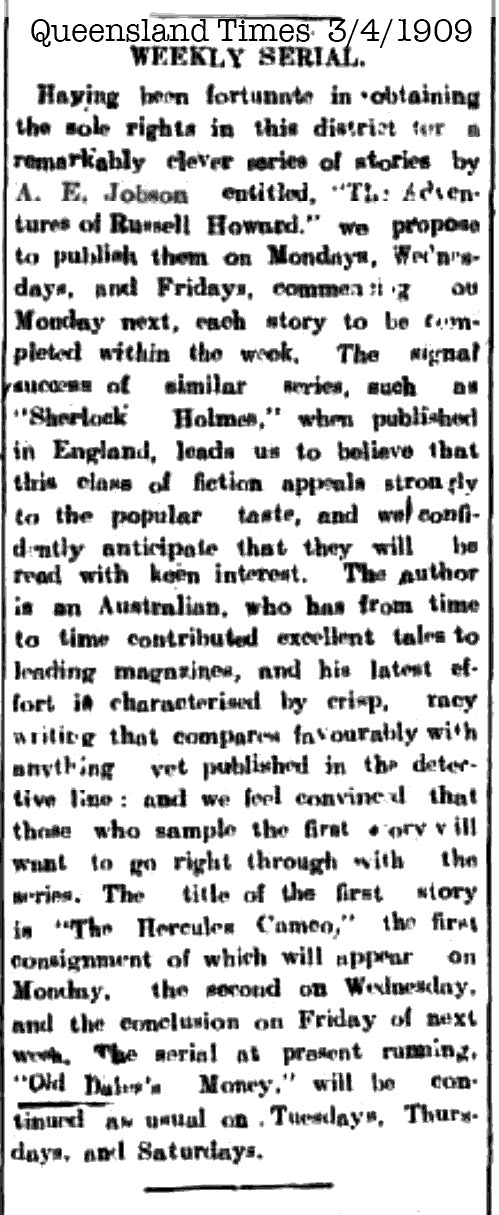
A report in the ‘Queensland Times’ sheds some light:
they have obtained the ‘sole rights’ to a ‘remarkable clever series of stories’ which they promise are just like Sherlock Holmes….
The first story to be published is interesting. Titled ‘The Hercules Cameo’, it is a story about a carved cameo of Hercules – purchased at Christies for 3000 Guineas – stolen by a German prince, and recovered by a private eye named Russel Howard. Hobson clearly had an active interest in the art world.
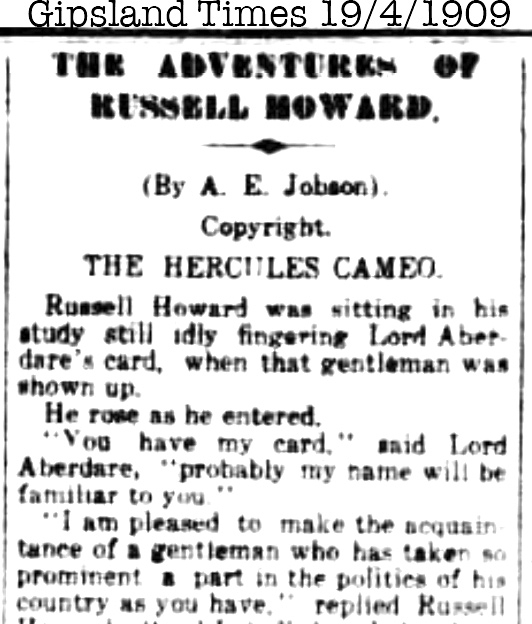
Over the next few years, we traced 12 newspaper stories published by A.E. Jobson:
Over the next few years, we traced 12 newspaper stories published by A.E. Jobson:
- 1: The Hercules Cameo
- 2: The Seventh Burglary
- 3: The Removal of the Millionaire
- 4: The Case of Lord Ponderry
- 5: The Scheming Lady
- 6: The Two Wax Candles
- 7: The Lady with the Pince-Nez
- 8: The Modern Highwayman
- 9: The Prince’s Letter
- 10: The Man Who Stole the Child
- 11: The Fire Insurance Matter
- 12: The Open Shaft
But who was A. E. Jobson?
These ‘AE Jobson’ stories, and at least one published book, never give the name of the author beyond the initials. There is a distinct possibility that this was intentional, to hide the author’s true identity. The ‘Queensland Times’ article of 1909 does refer to ‘him’, but they were not necessarily aware of exactly who was writing the stories, being rather a long way away. This is something often seen in the world of literature. Clearly, some research is needed!
Searching the available records, two candidates appear with the right initials and in the right context, an Arthur Earnest Jobson, Banker in Sydney, and Adelaide Ellen Hobson, daughter-in-law to prominent Victorian businessman, John Jobson JP.
Nothing came of researching Arthur the banker, but Adelaide was a different matter.
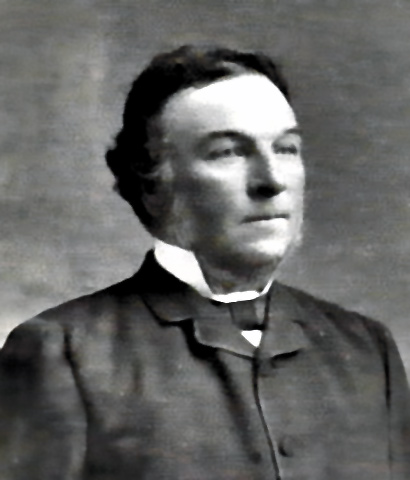
Adelaide Ellen Jobson was born at Port Adelaide, 1868, the eldest in her family. Her father, Stedman, died in 1887. Three years later, she married Charles Jobson, son of John Jobson, JP, businessman, Williamstown Football Club president, & Mayor of Williamstown (Victoria) in 1885.
The pastel has a certain ‘family’ feel to it: there are 6 children represented, plus a few adults.
The scene could well be Port Phillip Bay, somewhere near Spotswood where a day’s outing with the family would be likely- with Williamstown’s ‘back beach’ being a prime candidate.

We propose Adelaide Ellen Jobson was a very creative lady, who raised a family of five, but longed to write and paint to express herself; when her oldest children were entering their teens, she would have had more time to dedicate to writing, and so her first few stories were submitted to the papers for publication. Over the next decade, she produced quite a number of fictional books. A quick read – as they are all rather short stories, suitable for a newspaper – certainly shows an active mind, and perhaps we can see a female perspective: one story, written in 1916, is an interesting study.
It begins “Samson Greene was an artist, and it happened on one day in September, or it may have been in early October, that he was in Bathurst. Anyway, when he rose in the morning the sun was shining briskly upon everything.”
The character Samson is something of an old-fashioned gentleman artist, but by the end of the story, he is helplessly in love with a girl he ‘accidentally’ met while out painting – except the whole thing is a set-up by the girl, who has set a trap for him which he falls for, hook line & sinker! It has a definite twinge of ‘Barbara Cartland’ to it, and attributing it to a female author makes perfect sense.

Her other artistic enterprise was pastel art. This small work documents a lazy day at the beach very well, with family members relaxing and children playing. She had five children between 1892-1909, so if this piece was dated to around 1910-15, the children shown could well be her own. The location is not distinct, but the general layout of the water/land conforms to the local area they grew up in; Williamstown has a beach with beautiful white sand like this, and the distant higher ground could be the far side of Port Phillip Bay, a scene still the same today.
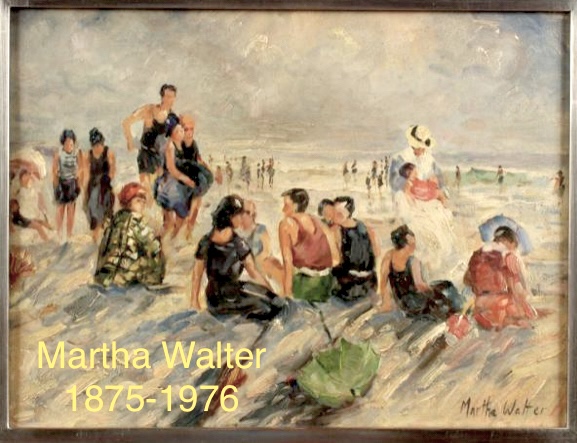
An interesting comparison can be made with American artist Martha Walter. She was active in the early 20th century, the same date as the work we are examining, and the similarity is unmistakable. Rather than a direct influence, it is probably just a result of the shared ‘beach culture’ seen in America and Australia – the gathering of families, the bathing suits – combined with an impressionist style which was the international vogue at the time.
The price is certainly different, with Walter’s work bringing many thousands for even minor paintings!
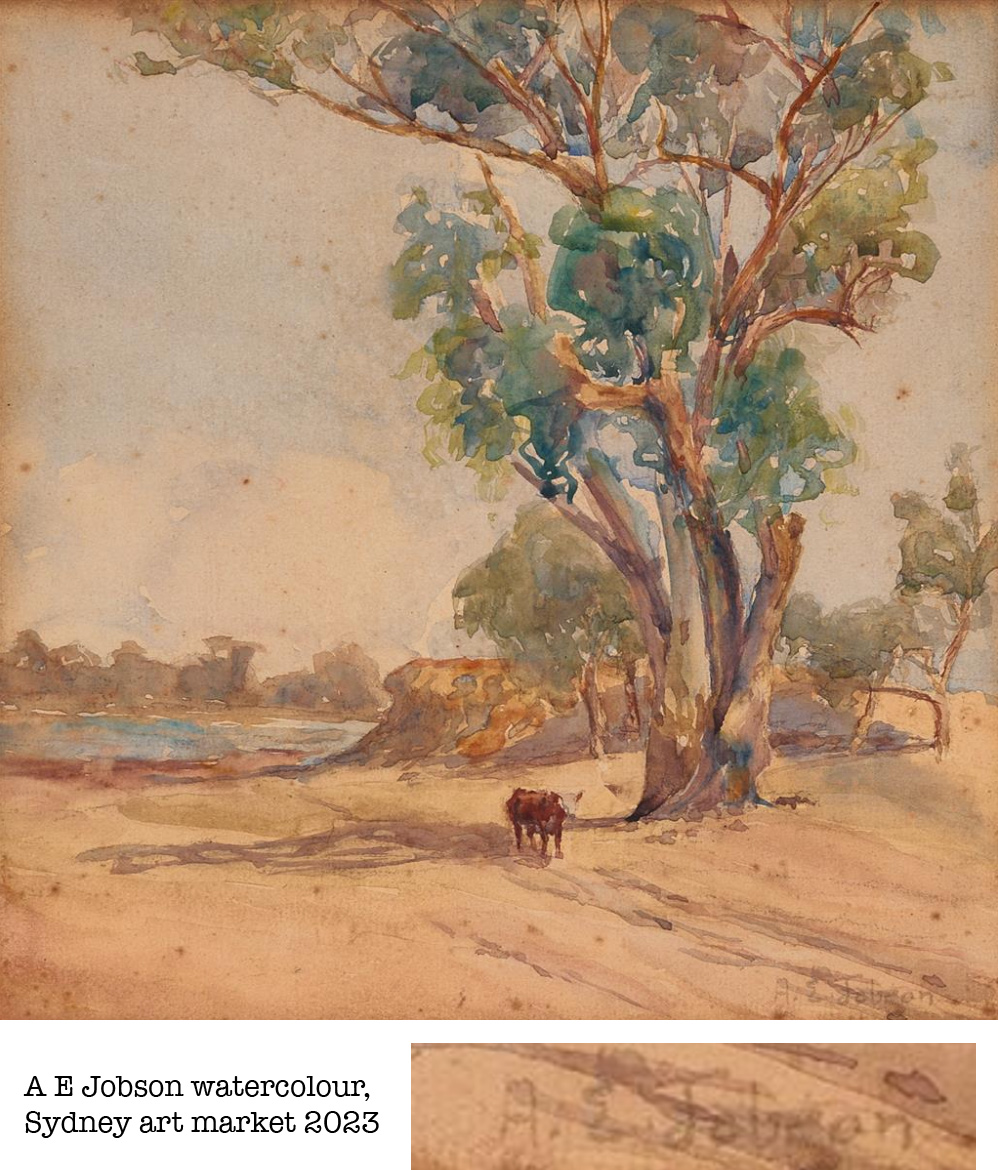
Adelaide Ellen Jobson could have been a notable artist, but her success as a published author, and no doubt also her dedication to her large family, restricted her opportunities. She’s a talented amateur, previously unrecorded.
We’d love to hear anything else you may have to add to this very brief répertoire!
